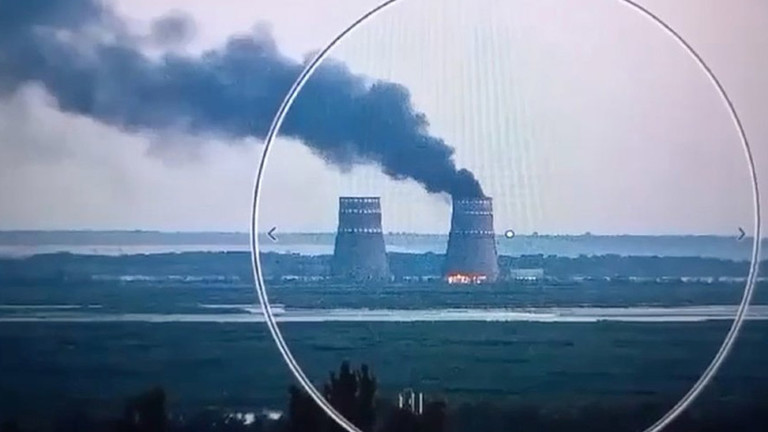This article was originally published by Ethan Huff at Natural News.
Things are not going so well for Ukraine after the armies of President Volodymyr Zelensky failed to complete their mission of attacking Russia’s Kursk Nuclear Power Plant (NPP).
At a recent cabinet meeting, Russian President Vladimir Putin confirmed that Ukrainian forces tried, but failed, to destroy the facility after sending thousands of troops into Russia’s Kursk Oblast earlier this month in what Putin described as an act of “terrorism.”
To stop Ukraine from succeeding in its quest, Putin deployed additional troops to the region for bolstered protection.
“Last night, the enemy attempted to strike the atomic power plant,” Putin said at the meeting. “The International Atomic Energy Agency [IAEA] has been informed. They promised to come themselves and send specialists to assess the situation. I hope they actually do so.”
At Zaporizhzhia NPP, Europe’s largest nuclear facility, IAEA observers have been positioned since the summer of 2023 to keep a close eye on the situation after Ukrainian forces attempted to set ablaze one of the plant’s cooling towers earlier this month.
Russian media is reporting that Alexey Likhachev, CEO of state-owned nuclear energy company Rosatom invited IAEA Director Rafael Grossi to personally visit Kursk to assess the situation there as Ukraine forges on in trying to win a war that it stands no chance at winning. Grossi accepted the invitation and is on his way to Kursk, after which he will visit Kiev to have a chat with Volodymyr Zelensky.
(Related: The United States and NATO, Ukraine’s biggest backers, are engaging in a nuclear extortion plot against Russia – are we about to see World War III unfold?)
Kursk NPP uses same reactors as Chernobyl
Grossi says the IAEA is extremely concerned about Ukraine engaging in combat operations around the Kursk NPP since it operates the same reactors as the ones located at Chornobyl NPP.
“They don’t have a protective dome around them – just the normal roof – which means that the reactor’s core is pretty exposed,” Grossi revealed, adding that it “is a source of enormous concern to me and the agency” that troops – he did not specify which – are within artillery range of the plant.
Russia remains highly critical of the IAEA, which it says failed to identify the perpetrators of the multiple attacks even though the agency knows full well that Kyiv is to blame.
Russian military journalist Marat Khairullin reported last week that Ukraine is preparing to launch a “dirty bomb” on either the Kursk NPP or the Zaporizhzhia NPP as part of a coming false flag attack. Moscow is taking the threat seriously, warning that any such attack will be immediately met with “tough military and military-technical countermeasures.”
“This is a very dangerous war game,” one commenter noted about how all of this military aggression taking place around large nuclear power facilities threatens to unleash a global nuclear holocaust.
“This is terrorism, no doubt. Atomic nuclear plants should never be targeted but protected by any parties funding war.”
Another slammed Putin for failing to stop NATO from invading Russian territory in the first place as this was supposed to be one of those “red lines” we keep hearing about that will not be tolerated.
“When will you resign because of your negligence and incompetence in allowing NATO to invade Russia?” this person asked of Putin.
Someone else criticized the IAEA for being little more than a “tool” for the “Western cabal” to make it seem like there are watchers keeping a close eye on nuclear power facilities for their protection.
“Russia had better do everything within its power to safeguard Kursk – no outsider can do it better,” wrote another.
Read full article here


